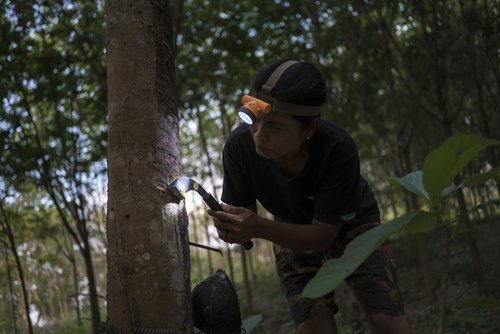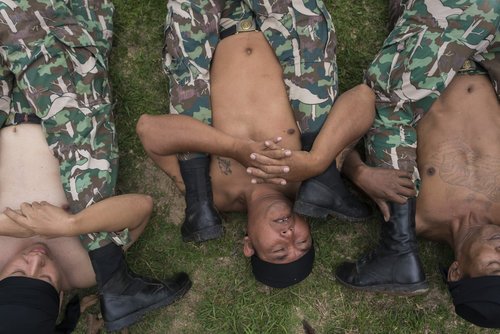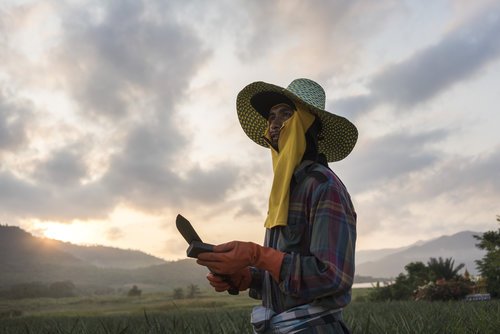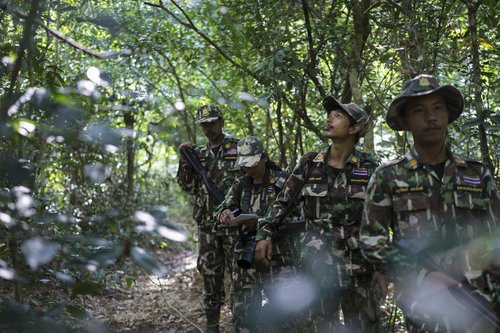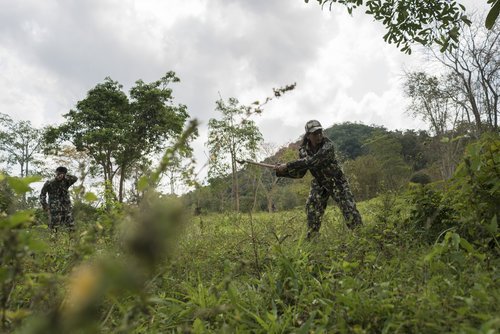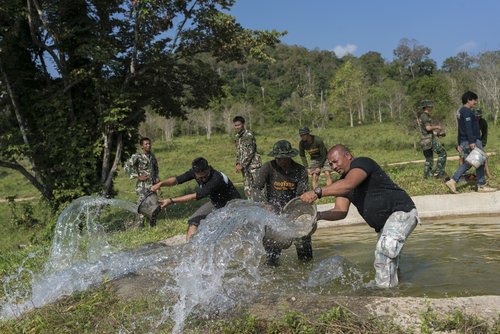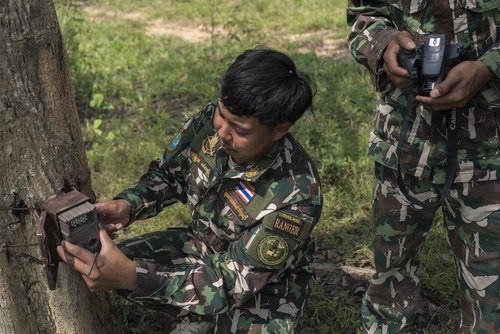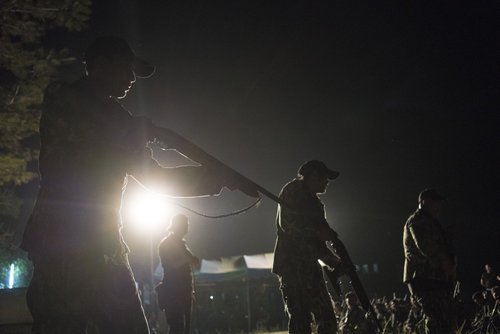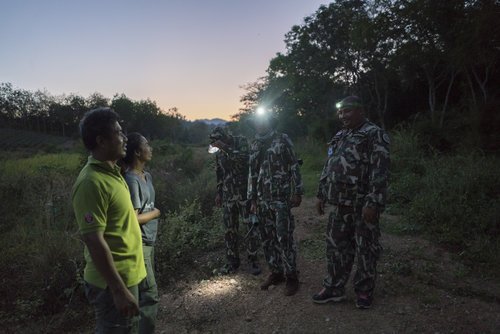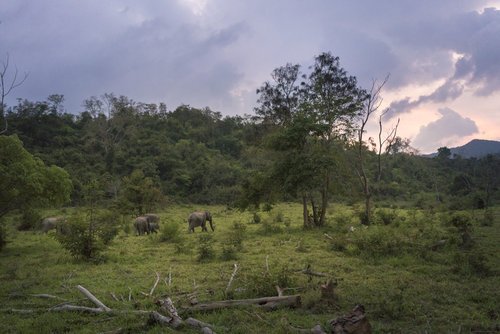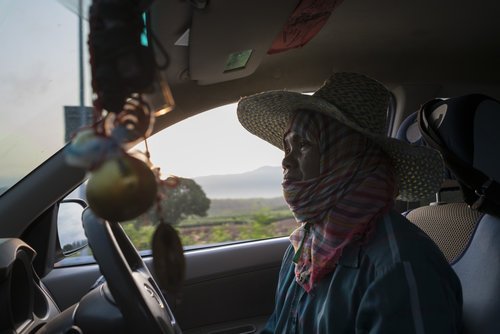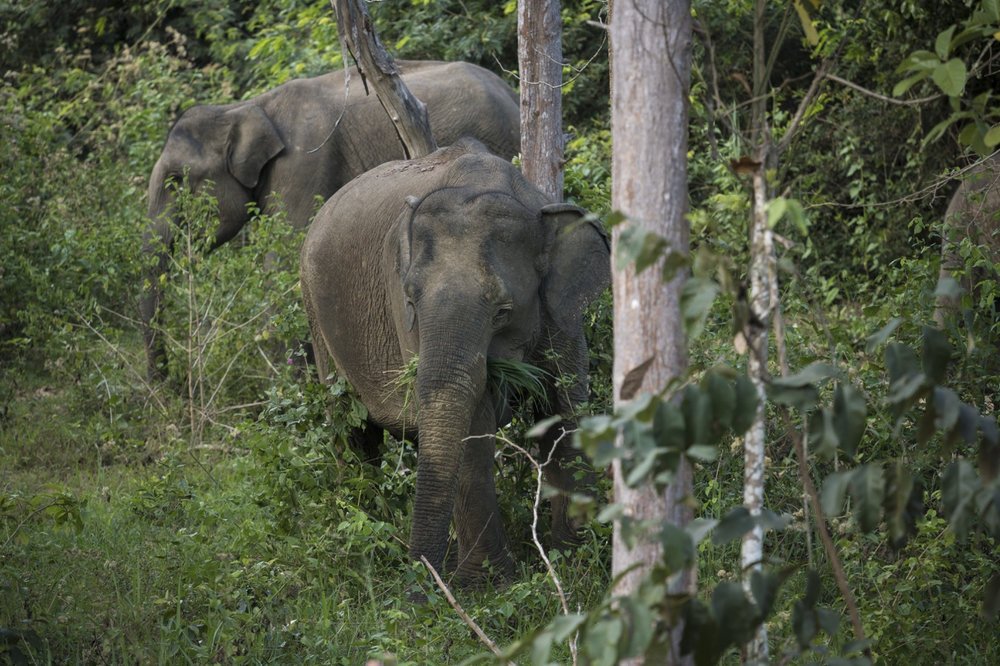
Human vs. Elephant
Ten years ago, there were around 150 elephants at Kui Buri. Today there are approximately 237. But this place hasn’t always been a safe haven for elephants. Prior to the park’s creation, villagers and elephants were at odds, with many conflicts turning tragic, even deadly.
In the late 1970s, settlers migrated from all corners of Thailand to the area, establishing the village of Ruom Thai and cultivating pineapple where elephants had once roamed unimpeded. With fields of the juicy fruit encroaching on what had been their territory, the animals began raiding farmlands, destroying crops, and leaving villagers furious.
Turning wild elephants into an asset for locals is at the heart of protection efforts for the park. Since 2006, park authorities—with support from WWF—have provided tourism-related training to some 100 households, that have incurred financial losses from elephants.
Today, 90 tour guides and 50 drivers from in and around Ruom Thai, the village nestled in the park’s hilly arms, work at the park on a part-time basis. Some families, have also begun offering homestays to tourists thirsty for an authentic Thai experience. And while most families still depend on farming as their main source of income, the stints at the park help balance checkbooks when global rubber or pineapple prices dip or elephants wonder in to their farmland.
Team
Director of Photography | Nicolas Axelrod
Writer | Marta Kasztelan
Photographer | Thomas Cristofoletti
